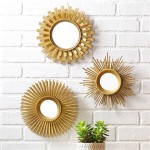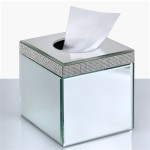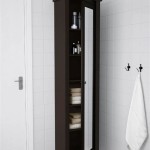Mirror Wall Mount Brackets: A Comprehensive Guide
Mirror wall mount brackets provide a secure and stylish way to hang mirrors of varying sizes and weights. Understanding the different types available, weight capacities, and installation processes is crucial for a successful and safe installation. This article offers a detailed exploration of these aspects, empowering readers to make informed decisions when choosing and installing mirror wall mount brackets.
Types of Mirror Wall Mount Brackets
Several types of mirror wall mount brackets cater to diverse needs and aesthetic preferences. The most common types include J-bar brackets, L-bar brackets, D-ring hangers with clips, and French cleats. J-bar brackets offer a simple, cost-effective solution, ideal for lighter mirrors. The "J" shape hooks over the bottom edge of the mirror, while the other end attaches to the wall. L-bar brackets provide a more robust option for heavier mirrors, offering support on two sides. One arm of the "L" attaches to the wall, and the other supports the mirror from below. D-ring hangers attached to the back of the mirror, paired with wall-mounted clips, offer a discreet mounting solution. French cleats, consisting of two interlocking pieces of wood, provide exceptional strength and stability for large, heavy mirrors. One piece attaches to the wall, and the other to the back of the mirror, creating a secure and flush mount.
Weight Capacity and Material Considerations
Choosing the appropriate bracket depends heavily on the mirror's weight and dimensions. Always check the manufacturer's specified weight capacity for each bracket. Exceeding this limit can lead to bracket failure and damage to both the mirror and the wall. Bracket materials also play a significant role in their strength and durability. Common materials include metal, such as steel and aluminum, and plastic. Steel brackets offer superior strength and are suitable for heavier mirrors. Aluminum brackets are lighter and resistant to corrosion, making them suitable for humid environments like bathrooms. Plastic brackets are generally less expensive but are best suited for lighter mirrors.
Installation Process and Best Practices
Proper installation is essential for ensuring the mirror's stability and safety. Before beginning, gather the necessary tools, including a drill, level, measuring tape, screws, and wall anchors appropriate for the wall type. Begin by carefully measuring and marking the desired location for the brackets on the wall. Ensure the markings are level to prevent the mirror from hanging crookedly. When drilling into the wall, use the appropriate drill bit for the wall material and ensure the screws and wall anchors are suitable for the weight of the mirror. For heavier mirrors, using wall anchors is highly recommended to provide additional support. Once the brackets are securely attached to the wall, carefully position the mirror onto the brackets, ensuring it is properly seated. Some brackets may require additional screws to secure the mirror to the brackets.
Choosing the Right Bracket for Different Mirror Types
Different mirror types may require specific bracket styles for optimal support and aesthetics. For frameless mirrors, J-bar or L-bar brackets are common choices, providing a clean and minimalist look. Framed mirrors may utilize D-ring hangers with clips or French cleats, depending on the weight and size. For large, heavy mirrors, French cleats offer the most robust support, distributing the weight evenly across the wall. For smaller, decorative mirrors, adhesive-backed hanging strips may be sufficient, but always consider the manufacturer's weight recommendations.
Wall Type Considerations
The type of wall material significantly influences the choice of screws and wall anchors. Drywall requires specific drywall anchors to prevent the screws from pulling out. For concrete or brick walls, masonry anchors and appropriate drill bits are necessary. Always ensure the chosen anchors and screws are compatible with both the wall material and the weight of the mirror. Consulting a professional for advice on appropriate anchoring methods is recommended for particularly heavy mirrors or challenging wall types.
Maintenance and Safety
Regular inspection of the brackets and mounting hardware is crucial for ensuring continued safety and stability. Check for any signs of wear, looseness, or damage. Tighten any loose screws and replace any damaged components promptly. When cleaning the mirror, avoid using excessive force or harsh chemicals that could damage the brackets or the mirror's reflective surface. Periodically verify that the mirror remains securely mounted and level, especially in high-traffic areas or areas prone to vibrations.

L Brackets Surface Mounted

Wall Mirror Bracket Best In Singapore Dec 2024 Lazada Sg

Wall Bracket For Mirrors Ø 76 Mm Traffimex

Mirror Clamp Support Wall Mounted Glass Bracket Heavy Duty

Wall Mount Bracket For Convex Mirror 32 40 48 Inch Road Safety

Convex Mirror Wall Bracket Esafety Supplies

32 Convex Mirror Mount On Wall E Weal

4 X Mirror Picture Corner Holder Nickel Wall Mounting Bracket 6mm Fixing Set

Simple Mount 42 In Heavy Duty Mirror And Picture Hanger Hm 42d The Home Depot

Round Stainless Steel Wall Mounted Mirror Bracket For Glass Fitting Size 1 3 Inch Diameter








